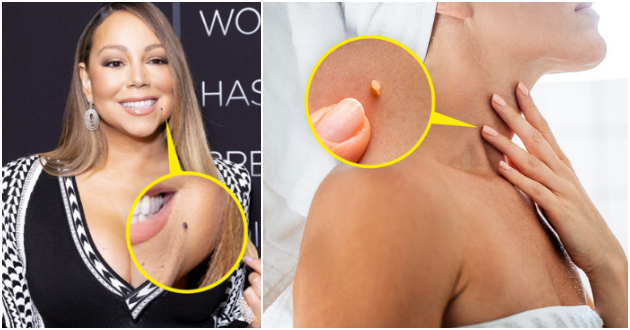Why do we have moles and other skin growths and should we be concerned?
- Healty Lifestyle

- Sep 27, 2022
- 3 min read
Skin growths such as moles and papillomas are a normal phenomenon, but the fact is that in rare cases they can be problematic.

Sometimes it's hard to tell the difference between a normal and cancerous growth, so it's always good to know the differences and the symptoms to look out for.
Why do we have skin growths and when should we consult a doctor? What are moles and why do they appear? Moles are a type of growth on the skin and are usually brown or black in color. In most people, they begin to appear in childhood.
It is normal for new moles to appear by the age of 25, and in some people a little later. On average, people have 10 to 40 moles on their body by the time they reach adulthood. Over the years, you may notice a change in some moles, and some of them may even disappear. They can also become darker if exposed to the sun, but also during the teenage years or during pregnancy. Some moles can also grow hairs. Moles occur when skin cells begin to grow in a cluster, rather than spread over the surface.

Should you be worried about them?
In general, moles should not be a cause for concern, and if there is a dangerous one, it will be different from the rest of your moles.
However, it would be a good idea to follow those who appeared after your 25th birthday. This does not mean that they are cancerous, but if you notice that they change, consult a dermatologist.
Symptoms to look out for:
Asymmetry – if one half of the mole is different from the other.
Borders – if the border of the mole is distorted and irregular
Color – if the mole is not the same color all over or if it has an odd shade, such as white, red or blue
Size – if the mole increases over time
Other changes – if the shape or color of the mole changes
What are papillomas and are they dangerous?
And papillomas are skin growths and are considered benign. This means that they usually do not enlarge and spread throughout the body.
Papillomas form only on certain types of tissue, but they can appear anywhere on the body.
They occur when the skin is infected with one of the many viruses in the human papillomavirus (HPV) group.
Although papillomas are harmless, you should not touch or scratch them because infection can occur. Also, do not try to get rid of them at home - if you want to remove them, go to a dermatologist.
If, however, you notice symptoms such as swelling in their area or pain and discomfort, it would be good to consult a doctor.

Can papillomas be prevented?
There are several ways to reduce the risk of papillomas:
Do not touch other people - the HPV virus is highly contagious, so you can get infected this way too
Do not use other people's hygiene items – this includes towels, razors, nail clippers...
Wash your hands often – the HPV virus is very common, so washing your hands regularly will significantly reduce the risk of infection
Stop biting your nails – through the wounds you create when you bite your nails, the HPV virus can easily enter the body
Don't go barefoot in the pool – the HPV virus thrives in wet and warm places, so always wear slippers when you go to the pool. The same applies if you use the shower at the gym.
















Comments